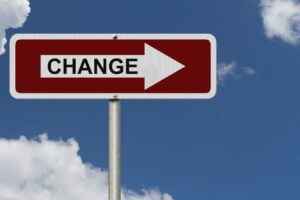Posted on: April 27, 2022
 As many events return to an in-person format after 2 years of being virtual, it’s important to understand what’s different about the new networking environment and how to make a positive impression.
As many events return to an in-person format after 2 years of being virtual, it’s important to understand what’s different about the new networking environment and how to make a positive impression.
Creating a positive first impression is fundamental if you want to the networking time you invest to be successful. Get it right and you will build rapport, develop fresh business relationships with a range of new contacts and potentially win new work.
Get it wrong and you can weaken your professional reputation, or worse still, risk people going out of their way to avoid you in future.
 Deciding which to event to go for…
Deciding which to event to go for…
There are so many events offering networking opportunities that it’s sometimes difficult to decide which to spend precious time on.
Popular in-person business events which are resuming post-pandemic include seminars, round table panel discussion, exhibitions, conferences, meet the team get togethers between different complementary companies, those networking events run by business groups, clubs and trade associations, business awards, training and the corporate hospitality or social events some organisations lay on.
Choosing the best one for you will depend on your area of expertise, the contacts you want to meet to develop your network and the time you have available. Pick events with a theme and audience more likely to link to your area of expertise. Try a few different events to see which is best for the type of people you want to meet, then (if they take place regularly) continue to support those which work well so you become a familiar face.
 What’s changed in the new in-person networking environment…
What’s changed in the new in-person networking environment…
While it’s great to experience the easing of restrictions, the past two years have meant that in-person networking is returning in a slightly altered guise to what it was before.
Here are some observations of what’s different.
Appetite for face-to-face contact
People are either super keen to resume face-to-face contact or slightly nervous about it. This means some events can be either oversubscribed or low in numbers. Over time this will even out, but for now be mindful that event organisers of the popular events may have to cap numbers. It’s best to book early.
Physical contact
Be mindful there are more sensitivities after the pandemic to personal space and physical contact. When greeting people, check first if they want to do the traditional handshake. Make them feel comfortable if they don’t. Also some people may want to wear a mask and again it’s important to respect that. Demonstrating enthusiasm, warmth and interest will be more dependent on facial expressions in the current climate. You can still tell if someone is smiling and interested if they’re wearing a mask.
If a handshake is in order make sure yours is neither too weak, nor too strong. Practise in advance with a friend, colleague or family member to get feedback on how yours feels.
Timings
Following a period where work vs life balance has been brought into sharp focus, and many are adopting a hybrid working approach, the timings of some events are shifting slightly to be more accommodating.
Guest lists
The guest list at a networking event used to be a key asset to help you spot the people you wanted to meet. With GDPR, environmental/sustainability agendas and the pandemic’s legacy of reducing ‘touchable’ items, it means many events are running without a guest list. That’s not to say you can’t still network effectively. More on that below.
Dress code
After the past two years’ virtual business interactions, business dress has become more casual. This is applying to in-person networking events, but it is worth checking with the organisers what the audience and dress code will be.
 3 preparation essentials…
3 preparation essentials…
Feeling rough? Postpone
If you’re feeling under the weather, then do consider passing this networking opportunity by. Send in your apologies (with as much notice as possible) and postpone your attendance until the next time.
People are much more sensitivite to wellness after the pandemic and avoiding the spread of infection. You certainly won’t create a positive first impression if it’s clear you’re unwell.
Try and identify contacts who are attending
It is worth checking with the organisers if there’s a guest list for the event which will be circulated in advance. This helps you to spot people you’d like to meet and do research (eg via LinkedIn) so you can have more informed discussions.
If there isn’t going to be a guest list, try
- Making the most of any social media forums being set up for the event and #hashtag conversations. These will help you to find out who is going.
- Reaching out to any of your contacts to see if they’re going so you have some familiar faces to catch up with first.
Prepare as you would an important business meeting
Whatever the networking event’s time, try and avoid alcohol and strong smelling food (especially garlic) in the 24 hours before. Make sure you give yourself plenty of time to get ready and gather everything you need. Avoid arriving late, stressed, untidy and ill-equipped. People will spot stress in your appearance (and they’ll probably conclude you’re like that all the time).
Whatever you wear, it helps if you can easily accommodate on your person your business card holder, a pen and a small notebook or your phone to jot down any follow up points that come out of your discussions.

6 ways to create a positive first impression at an in-person networking event…
1. Make sure you arrive on time and get a good spot within the room.
…facing the entrance is ideal, as you can keep an eye on who is arriving. Another good spot is by the refreshments as people naturally gravitate in that direction when they arrive.
Prioritise open groups (where one side of the group is open to the room) or individuals as these will be easier to join/strike up a conversation.
2. Where to put your badge
If you’re right handed wear your name badge on the right; if you are left handed then pin it to the left. That way, if you do shake hands, your badge is closer to the person and not tilted away from them. It will give people a decent chance to read your name and imprint in their mind who you are.
Also make an active effort to remember the name of the person you’re speaking to. Avoid having to repeatedly stare at their badge. They will notice!
3. Devise an interesting introduction which encourages people to want to know more (practise in advance).
As well as saying your name and company try and mention what you do to help your customers/clients. If you can talk in terms of the benefits your customers get from working with you and what you like about your work, then your introduction will be a lot more memorable and interesting.
4. Building rapport during a conversation
It’s understandable if you’re nervous, most people are at networking events. Make it easy on yourself and take the initative to ask people about themselves after the initial greeting. Listen to what they tell you. Not only does this give you a little breather, it helps you assess what aspect of your work and interests will most engage that person when it’s your turn to speak.
You are likely to uncover more opportunities to build rapport if you listen more than you speak. Use what you’ve learnt from the other person to share some relevant insight and find points of commonality between the two of you.
Also try to convey your experience and expertise by sharing concise examples and stories, rather than bland statements. Stories and examples will stick in people’s minds more and help them to remember you.
5. Create a follow up opportunity
If there’s an individual you think could be a good contact going forward, try and engineer a follow up activity after the session. Offer to send them something or call to fix a coffee to talk further about that particular issue. You typically need multiple positive interactions to build trust with a person so they are happy to send opportunities your way.
In suggesting a follow-up activity remember that in-person, virtual and phone based interactions speed up the process more than email and LinkedIn.
6. Move around but leave people politely
Try not to spend all your time with one person. Move around so that you get to meet a number of people during the session. If you do need to move on, try and help the person you’ve been with to move on too. Extract yourself politely by either offering to introduce them to someone else, or taking them over to join another group. Once they’re happy talking, indicate that there’s someone else you need to speak to and move on.
 And finally…
And finally…
Business events can be a great way to forge new business relationships which lead to new opportunities, but to do that you do need to understand what first impressions you’re creating. Work hard to create good ones. Having a genuine interest in people really helps.
And once you have created a good impression, remember it needs further nurturing if a contact will want to meet you again and work with you in some way.
Follow up the contacts you make in the timeframe you’ve promised. Deliver on your promises and prove yourself a worthy professional to get to know further. For more help here – see our article How To Follow Up Networking Events
For more advice and coaching on how to improve your networking contact us or tel. 01483 429111.
 Deciding which to event to go for…
Deciding which to event to go for… What’s changed in the new in-person networking environment…
What’s changed in the new in-person networking environment… As many events return to an in-person format after 2 years of being virtual, it’s important to understand what’s different about the new networking environment and how to make a positive impression.
As many events return to an in-person format after 2 years of being virtual, it’s important to understand what’s different about the new networking environment and how to make a positive impression. 3 preparation essentials…
3 preparation essentials…
 And finally…
And finally…